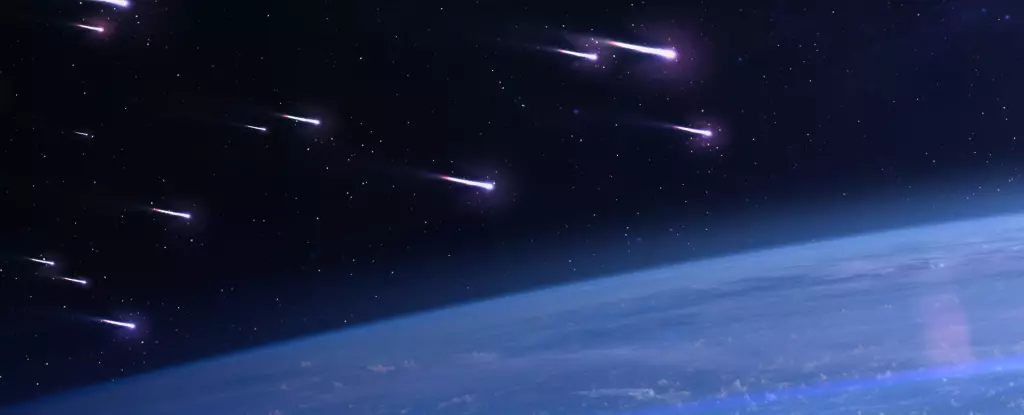As stargazers and cosmic enthusiasts gear up for the celestial event of the Leonid meteor shower, there is much excitement surrounding this year’s viewing opportunities. While 2024 may not rank as a stellar year for these cosmic streaks, the allure of the Leonids, with their history of breathtaking meteor storms, captivates the imagination. Having witnessed their splendor firsthand in Kuwait during a significant meteor shower in the late 1990s, I find myself drawn to share insights into this magnificent phenomenon.
The Leonid meteor shower holds a storied place in the history of astronomical events. Originating from the debris left by the comet 55P/Tempel-Tuttle, the shower is known for its robust outbursts, occurring roughly every 33 years when Earth intersects with particularly dense trails of cometary dust. These outbursts can produce breathtaking sights as meteors streak across the night sky at exceptional rates, leading to spectacular displays that have dazzled observers throughout history.
For instance, the 1966 Leonid meteor storm is a notable event on record, producing upwards of 150,000 meteors per hour. Such numbers illustrate the potential power of the Leonids, transforming a simple meteor shower into a captivating celestial spectacle. Observers during these storms can experience meteors cascading down like fireworks, creating an unforgettable atmosphere of awe and wonder.
What to Expect in 2024
The anticipated peak of the Leonid meteor shower will occur on November 17, 2024, around 4:00 Universal Time (UT). Under optimal conditions—meaning a dark sky away from urban light pollution—stargazers might expect to see around 15 to 20 meteors per hour. However, it’s essential to note that 2024 is predicted to be a relatively quiet year for the Leonids, likely attracting more die-hard meteor watchers than casual observers.
In a twist of fate, the days leading up to the Leonids are also associated with several other potential meteor streams. As astronomers like Jérémie Vaubaillon from the Paris Observatory suggest, Earth may encounter older debris trails from past paths of the same comet, thereby expanding the meteor-watching experience. Critically, November 14, 2024, aligns with an encounter with a dust trail from 1633, providing an early opportunity to observe shooting stars.
Skywatchers should be aware that lunar phases play an instrumental role in meteor observation. In 2024, the waxing gibbous moon will approach its full phase by November 15, potentially obscuring fainter meteors with its brightness. This is a crucial factor that can significantly diminish the number of visible meteors, especially for those wishing to enjoy the show with the naked eye.
While it is inevitable to face some challenges concerning visibility, the heart of the Leonid experience lies in the shared anticipation and seeking solace in nature while gazing at the stars. Having the right environment—distant from artificial lights—can augment the appreciation of this ethereal event.
To make the most of your Leonid experience, early morning hours typically present the best viewing conditions, as Earth’s rotation directs observers into the meteor stream. A wise technique involves setting up a camera on a tripod aimed toward the radiant of the shower, allowing auto-exposure captures over an extended period. This setup not only collects stunning images but also permits viewers to enjoy a moment of silence with a warm beverage in hand while the sky above comes alive.
As the cosmic dance of meteors unfolds, patience and the right mindset will enhance the experience. Space enthusiasts know that surprises are part and parcel of skywatching. So even in a year when the Leonids are listed as an off year, one can never predict what magnificent sights this celestial phenomenon might unveil.
Looking Ahead
As our gaze continues to shift toward future meteor showers, the Leonids serve as a reminder that the cosmos often holds surprises—sometimes waiting for us until the decades ahead. Though 2025 may show glimpses of potential outbursts from the Leonids’ trails laid down centuries prior, a lesson remains: never miss an opportunity now, as the wonder of the stars awaits those willing to look up and remember the tales of the cosmic roads traversed.

